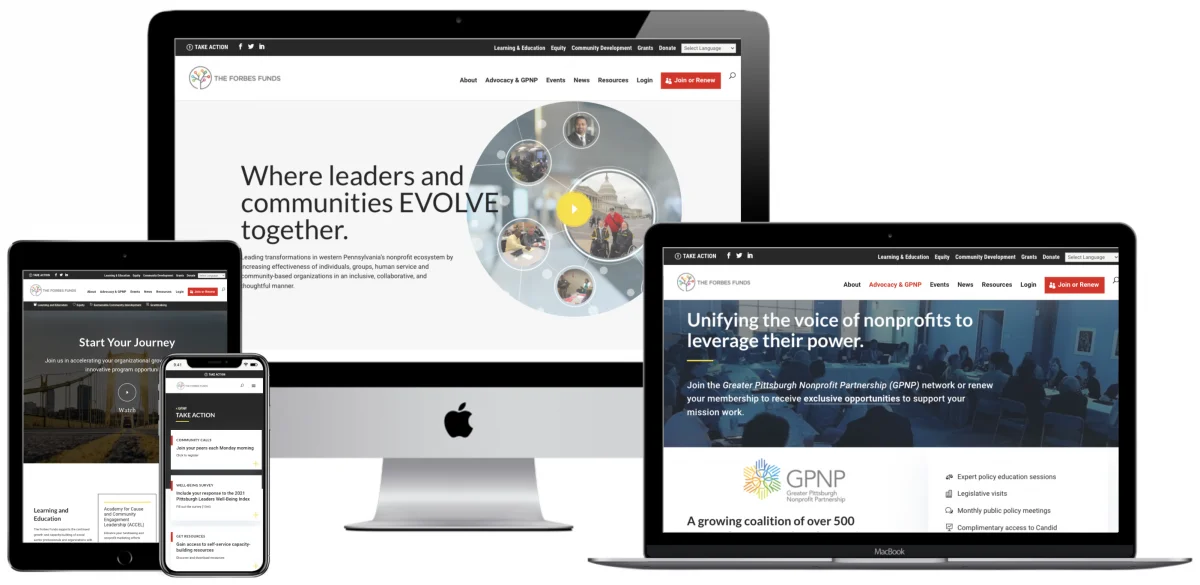When you’re ready to make a new website, it’s essential to have a plan. That’s where a web design statement of work comes in. A statement of work is a document that outlines what you want to make, how long it will take, and how much it will cost.
A statement of work (SOW) is a formal document that defines a project, products, services, or deliverables to be provided by a vendor to a client. The SOW typically contains a detailed description of the work to be performed and the duties, responsibilities, and expectations of both the client and the vendor. Scope of work (SOW) is a document that outlines the deliverables, tasks, and timeline for a project. It is often used with a statement of work (SOW) to provide a more detailed description of the work to be performed.
Knowing how to create or review a web design statement of work will help ensure that you get what you want and pay for what you need. This article provides tips for creating a web design statement of work and suggests questions to ask a prospective web designer.
What is a statement of work?
A statement of work, often called a SoW, is a document that describes a project in detail. A statement of work describes what a client wants to make or gain from a project, which is equally important for both the client and contractor. A statement of work is crucial in preventing cost overruns and contractual disputes between a client and contractor.
A statement of work is often used in contracting professional services, such as programming or consulting. The contents of the statement of work depend heavily on the contracted project. Statements of work can include detailed instructions, specifications, procedures, and forms.
Since a website is such a complicated creation, it requires a detailed statement of work. The statement of work for a web designer will be highly specific to the client’s needs. It is crucial to keep in mind that a programmer’s statement of work, for instance, will look and read differently than that of a web designer or a graphic designer. And an advertising agency’s statement of work will likely look a little different than a web design agency’s, but it will contain similar information.
20 Questions to Ask a Web design company, Web Designer, or Agency
When reviewing or creating a statement of work for a web design project, here are a few questions you can ask of yourself and the web designers you are interviewing.
- Which content management system (CMS) do you specialize in? Can you use the WordPress CMS (which powers over 40% of the top 10 million websites globally)?
- What are the project’s goals and objectives, and how will they be accomplished?
- What tasks and activities are required to complete the project?
- Are there any restrictions or requirements the web designer should be aware of?
- Will the project involve multiple projects or sub-tasks working together?
- Will the results be exclusive to the client, or can the designer reuse the work for other clients or projects?
- What’s the expected launch date for the project?
- What will the website look like?
- Will the website require a hosting service? Where will it be hosted? Is it managed web hosting?
- Will the website require emailing capabilities?
- Will the website require any software installed on a server or remote location?
- Will the website require maintenance, and if so, how often?
- Will the website require marketing materials such as business cards, brochures, etc.?
- How much will the project cost, and how will the costs be determined?
- Who will own the copyright to the work?
- How will costs be tracked, and what is the process for cost overruns and refunds if necessary?
- When will payments be made, and how much?
- Will the web designer access the website after the project is completed so they can update it with new content?
- Beyond technical website maintenance, do you offer ongoing improvement and progressive enhancements?
- Do you imagine the second phase of work where you can work with us to prepare & deliver on a product roadmap?
Signing a Statement of Work
When reviewing and signing a statement of work, remember that both parties need to be clear and precise about what is being agreed to. Any ambiguity can lead to problems and disputes down the road. A web designer should never sign a statement of work without carefully reading and understanding its contents.
Cost Estimating for Web Design Projects
Consumers should be aware of warning signs indicating a questionable company when getting quotes for web design projects. Most companies base their quotes on a reasonable amount of research and knowledge about the project. However, some companies will provide quotes without knowing much about the project, to make a sale. These companies may not be reputable and, therefore will likely provide quality services nor offer a fair cost.
There are several methods for cost estimating in web design. One method is time and material (T&M), in which the company charges based on the time it takes to complete the project and any additional materials used. Another method is flat fee (fixed cost), in which the company charges a set fee regardless of the time or materials used. Both methods can be criticized for being unfair or biased, but both can also be adjusted to ensure the client is satisfied. A less popular method include performance-based, which we won’t get into in this article.
So, when receiving quotes for web design projects, it is important to ask questions if a cost estimate isn’t clear. It is normal to get different cost estimates from different companies, so it’s important to find a company that meets your budget while also offering the features and benefits you want. Consumers should also remember that cheaper isn’t always better. It is better to pay a fair cost than overpay for a project. It is also worth noting that cost varies depending on your chosen company. So two different companies may offer the same product at different prices.
Before a company can provide a signable statement of work (or something similar, called a Master Services Agreement, or MSA for short), it will first collect information about the project to estimate the project’s cost accurately. This will specify information—like content, programming languages, web hosting platform, design, features, and more. The web design company will also collect information about your organization and goals for the web design project to ensure the results meet your expectations and goals.
Pre-project interviewing is key to getting a solid estimate. When estimates differ between companies, these differences are often a direct result of how different companies interpret the project information. Understanding what’s needed for the estimate and then getting several company estimates is the best way to ensure you’re getting what you pay for and that you may have options most suitable to your needs.
Cost of hiring a web design company
So now that you understand the cost of web design let’s get into the costs of hiring a web design company. Keeping your cost and time expectations realistic is vital when hiring a company for your web design project.
Cost of the planning stage
The planning stage, also known as Discovery, is often overlooked when it comes to estimating the cost of a web design project. Proper planning is essential for a successful project outcome. During the first phase of a project, the Discovery, the web design company will learn about your business and goals for your website. They’ll also test your website’s performance and web accessibility to ensure it meets industry standards for quality. An audit is typical for website redesign projects, but the process is slightly different for new web design projects.
Cost of web design project implementation
The actual web design project implementation is where you’ll receive technical expertise. If you don’t know exactly what you need, you may require consulting and an in-depth Discovery phase, which can last days to weeks or even months.
During this stage, it’s common for companies to charge an hourly rate plus a fixed fee for the Discovery portion of the project.
How much does hiring a designer or a digital agency to build a website cost, and how does pricing work?
Fixed fees are typical for the work done in researching, testing, developing, designing, and planning your new website design project. Hourly rates may range from $30 to over $150 per hour. This range depends on whether or not you hire a contract web designer and their expertise and skills, or a digital agency and web design team like Key Medium. Contractors in design often range from $30 to $85, and most agencies start at $90 to $120 per hour per expert.
Cost of web design after project launch
Once your new website design is live, you will start paying an annual fee to retain your domain and a managed web hosting provider. This fee ranges from $12 to $1,200 a year, depending on how much value you get from your domain and managed web hosting package.
Cost of web design changes and maintenance
Making changes to your website is part of maintenance; these changes aren’t free. Small or simple web design changes will cost you between $15 and $250, depending on how tedious the change is to make. More significant or complex web design changes and new feature requests (e.g., add a calendar with member sign-up capabilities) may cost you a fixed fee for the additional hours the web designer will need to complete the change.
Small to medium-sized businesses and nonprofit organizations (those with 2 to 100 employees) can benefit from a website redesign project to improve the look and functionality of their existing website. Organizations with this size range tend to have cluttered and outdated websites, which prevents them from converting visitors into clients.
Website redesign pros and cons
Pros
- Reduces server loads and improves website speed (this is very important in today’s digital world)
- Improves user experience
- Increases organic searchability (search engines can easily index your new website and content)
- Good web teams make your website more secure against malware and hacking attempts
Cons
- Costly (when done right)
- Takes a lot of time to complete the planning stage and process
- It can negatively impact your Google rankings during the redesign process if not done right
Interview several web design agencies or contract web designers
You should work with a trusted web designer or team to get the most out of your website redesign project. To conduct due diligence and build trust with your future web designer, interview several web designers to ensure they’re a good fit for you and your mission.
Get samples of their work
You should be able to see and read about the success of the web designer’s previous website redesign projects. Make sure to see a variety of projects — some similar to the project you want to undertake, as well as various types of websites the designer has worked on. Freelance, or contract web designers, for example, often have a public portfolio of their work, Similarly, web design companies like digital agencies, marketing firms, and advertising agencies often have Case Studies you need to check out for your due diligence.
Look for signs of excellent web design work
You should be able to quickly identify if the web designer you’re interviewing is a top-notch professional or just someone who says they can do the work for you. You should be able to recognize the quality of their previous projects through their websites and project showcases, awards and honors, and testimonials from existing and previous clients.
Make sure the web designer understands your objective and mission
There’s no point in hiring a web designer who doesn’t fully understand what your organization does or the objective. Ensure the web designer or team you’re interviewing has done similar projects and understands your mission.
Ask for a proposal detailing their plan and costs
Once you’ve found a web designer or team you trust who understands your objective and organization, ask them to provide a detailed proposal outlining:
- What they plan to do (include a plan of action and timeframes)
- How much will it cost (all costs and charges must be clearly stated)
When they will begin the work
You should also ask for examples of web designs similar to the one you want for your website redesign project. You should also ask about their Discovery process and what is required of you, and at which point regular check-ins will occur (usually they are as-needed).
Don’t forget the bottom line: web designers and digital agencies provide superior service at competitive prices.
A successful website redesign project will result in a better-ranking, more favorably viewed website that generates more leads and revenues for your business. Make sure you follow these tips to find and choose the best web designer for your business.
We Miss You, Old Website; Welcome New Website Design!
So now, you have a new website design!
You’ve survived the process of finding and hiring a web designer. Congratulations! Now it’s time to let your new designer do their magic. Be ready for change, mainly if you’ve been operating your business on dated technology.
Remember the happy times…and don’t be afraid to offer feedback.
It can be hard to let go of a website design that’s been with you since the beginning. You may feel attached to the design and its visuals, so much so that you don’t want any changes. Even so, be open to suggestions from your web designer. Feedback is always helpful in improving your website’s look and functionality.
Remember that your web designer knows what will work best for you. Their suggestions are based on research and real-world experience. You should listen to their advice!
Review your new website before it goes live
Once your new website design is ready, review the content and make any necessary edits. Make sure all the information is correct.
You should also check the design. Your web designer probably already told you what would change, and you’ve seen and approved early designs. Still, seeing it for the first time via a browser can be a shock, and some design is often subject to change as it develops. Give yourself a few days to adjust to the changes, and be sure to test basic functionality, like checking for broken links and searching for a particular page you want to navigate to.
If you didn’t receive a link to test the site before launching it, ask for a link to a staging website (often called “Test Website”). That way, you know what to expect when the website goes live and have had an opportunity to test the final website delivered before launch thoroughly. It is essential to provide feedback promptly and communicate well throughout the process.
Some designers offer pre-launch reviews and user testing as separate services. Take advantage of this if you feel too nervous or overwhelmed to do both the content and design reviews yourself.
Be positive! Launch is imminent.
Make sure all of your information on the website is up-to-date. This includes items like:
- Contact information
- Physical/email addresses
- Business hours
Once it goes live, be sure you retain a backup of the old website; if this is a new website design project, don’t worry about that.
It’s normal to be a little nervous about launching your new website. Just keep a positive mindset. Research shows that web shoppers better understand organizations with fast, well-designed websites. Your new site can help you grow faster—gaining new customers, increasing sales, and growing your mission work and advocacy if it is a nonprofit.
If this has helped you, please consider sharing it with your friends & colleagues. You may also explore our insights and resources for more helpful content like this and a series of content to aid in your design and development vendor selection process.
Connect with us for a free 15-20min website consultation if you have questions about designing or building a website. If our work aligns, we’d be happy to help and provide a quote for your next project.

Ali Jaffar has been building dazzling websites and creating amazing online experiences for over a decade. His mastery of the latest innovations in web development results in world-class website experiences set apart by show-stopping style and seamless functionality. A sought-after consultant and 50-time award-winning storyteller, UX expert, and web developer — Ali lends his talents to build and bolster digital experiences for a wide array of clients — with a keen focus on web design for nonprofit organizations, B2B, and government agencies. When Ali’s not helping his clients grow, you can find him cooking, exploring new places with his dog, or experimenting with AI & new gadgets.
Connect with Ali on LinkedIn to continue the conversation.

